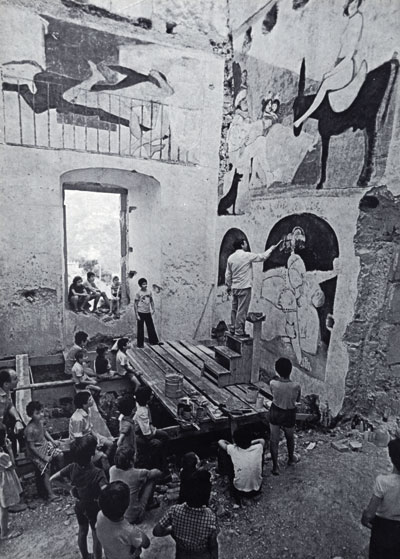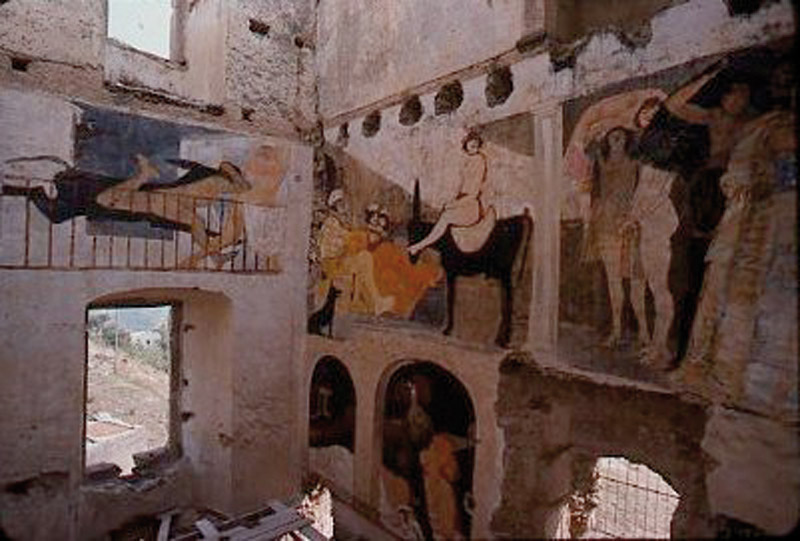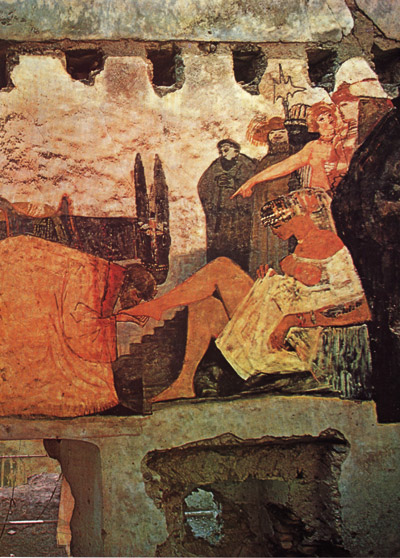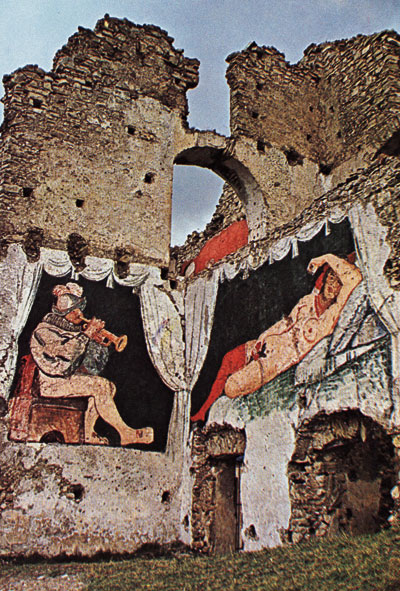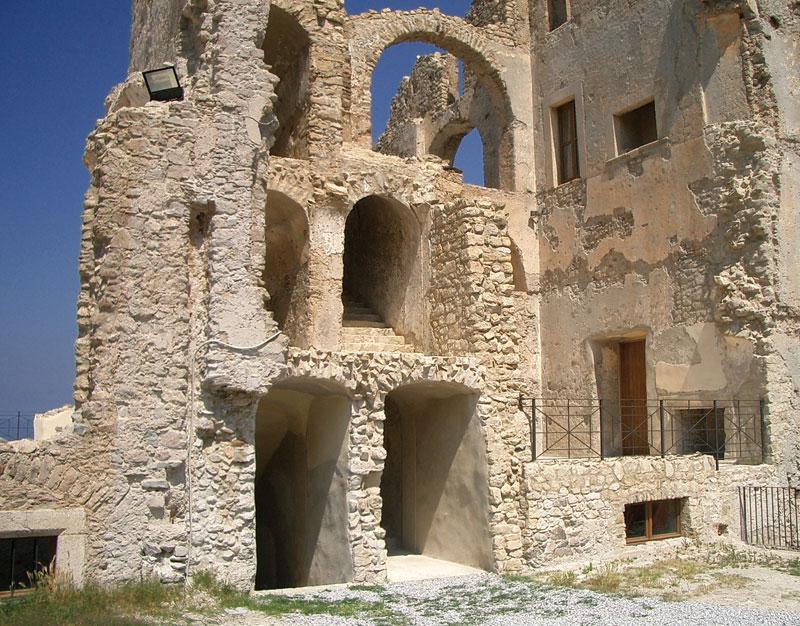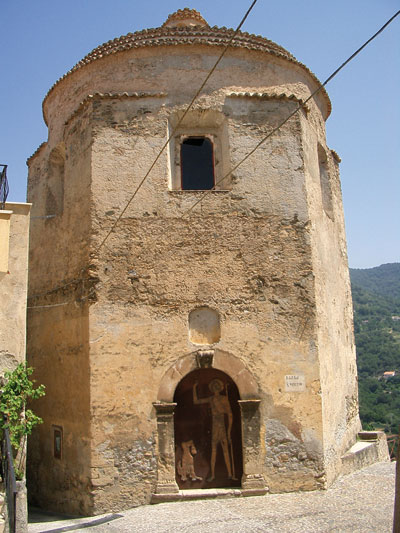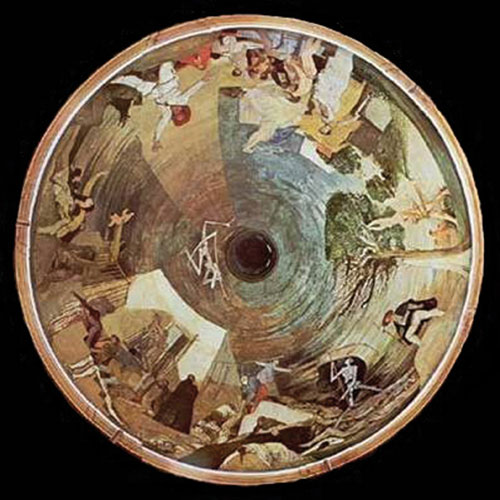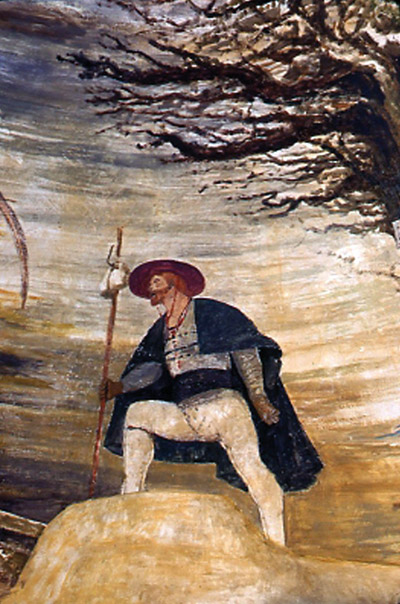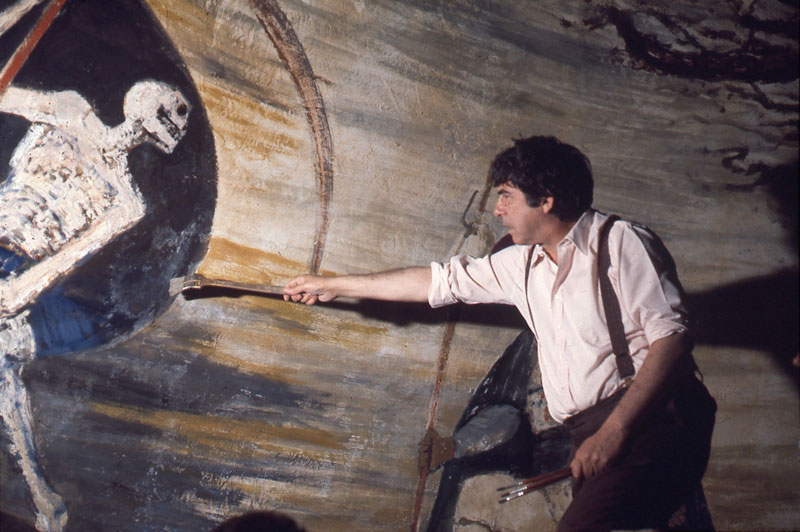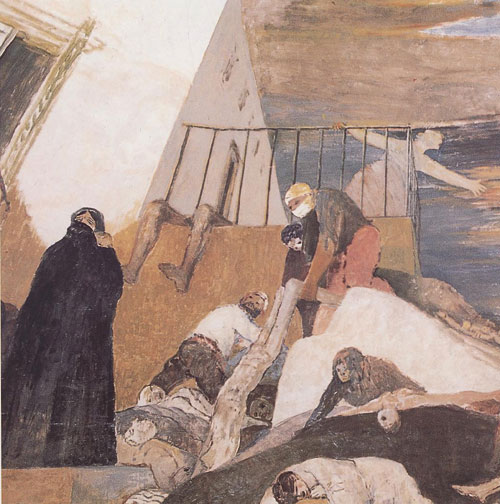THE FRESCOES OF FIUMEFREDDO BRUZIO
During the summer of 1975 Fiume frescoed the walls of a half tumbledown castle in the little town of Fiumefreddo Bruzio, Cosenza, Southern Italy. Considering the internal and external walls, he painted thirteen of them. Two of the three stories represented in the paintings were about Medieval life, while the third one described a beautiful girl from Calabria enslaved and imprisoned by theTurks. Back from Fiumefreddo Fiume carried out a series of paintings inspired from the old Saracen invasions that had taken place in those lands in the IX Century. Unfortunately, the Fiumefreddo frescoes were almost entirely destroyed by bad weather. In the summer of 1996, at age 81, Fiume repainted most of the internal walls. In 1976 Fiume painted the miracles of St. Roch inside the dome of a chapel dedicated to that saint in the little town of Fiumefreddo Bruzio, Calabria. Fiume’s composition illustrates four stages of the story of St. Roch that took place when he encountered a plague in Italy on a pilgrimage from France to Rome. The first stage shows St. Roch facing that terrible scourge, the second shows the expulsion of death; in the third one Fiume illustrates the spreading of faith among those affected by the plague, while in the fourth one the return to life is narrated through the biblical symbol of Adam and Eve under the tree, which is now in blossom again after burning and shrivelling.
CRITICAL TEXTS
SALVATORE FIUME
I have painted the miracles of San Rocco on the vault of a little church dedicated to that saint in the town of Fiumefreddo Bruzio, Calabria. Nobody had asked me to do the job or given me the commission. In fact, I asked the administration to let me execute the painting because, since 1959 I had wanted to decorate a vault like the one painted by Goya in the chapel of San Antonio de la Florida in Madrid. The power with which Goya had broken the traditional schemes for representing religious themes had disturbed and fascinated me at the same time. In 1959, during a journey in Spain, with my eyes filled with the memory of Italian Renaissance painting, I saw for the first time in Goya’s vault a new way of representing supernatural deeds among worldly miseries. Being a man of little faith, Goya was more preoccupied with underlining human pain and the bewilderment of the humble than the Saint’s privilege of being able to do miracles and dispense recoveries. The Goya vault had not been painted in a polemical attitude towards the importance attributed by the Church to the Saints; it was only a new way – quite subdued in comparison to the Renaissance model – of representing supernatural interventions over the suffering people, often incredulous and even vulgar. Such representations inside a church may cause misunderstandings and may even appear as profanations of that holy place. This is not the case with the vault of Madrid, where the beauty of the painting is in itself a miracle of a nature no less divine than the miracles of the Saint. A semispherical vacuum placed above, inside a holy place has the power to attract not only our eye but even our spirit. He who turns his eyes to the sky usually leaves his earthly cares behind, at least for a moment. A painter of our time who should venture on an experience like that of Fiumefreddo, would not know the difficulties he would encounter in painting on a concave surface, which can be described as rotating because of the innumerable foreshortenings that are created by every shift of one’s point of view. From up there, the painter must make sure that the whole composition can be read from below in no more than one or two glances. I painted the vault of San Rocco, the Saint patron of the plague-stricken, in the same days when in Séveso, near Milan, a toxic cloud that had belched out of a factory of who knows what poisonous products, was invading a large portion of Brianza causing illnesses to the people and even to the soil and plants. Perhaps I wouldn’t have been able to make the tale of the plague so dramatic nor to express the energy of San Rocco in chasing Death, if in those days I had not been disturbed by the tragedy of Séveso, a town not far from Canzo, where I have my home, my family, and my studio. I think that the state of tension in which we all found ourselves in the summer of 1976 was largely responsible for the fact that beginning and finishing the painting, in a trance-like state, took me only twelve days. The themes of the decoration are, as I said, the plague and the miracles of San Rocco. The composition illustrates four aspects of the Saint’s experience in Italy when he ran into that terrible plague while on a pilgrimage from France to Rome. The first one illustrates San Rocco meeting the plague. The second illustrates the chase of Death. In the third one, faith spreads among the plague-stricken. In the fourth, the return of life is symbolized by the biblical image of Adam and Eve under the tree that has blossomed again just where it stood burnt and dry.

